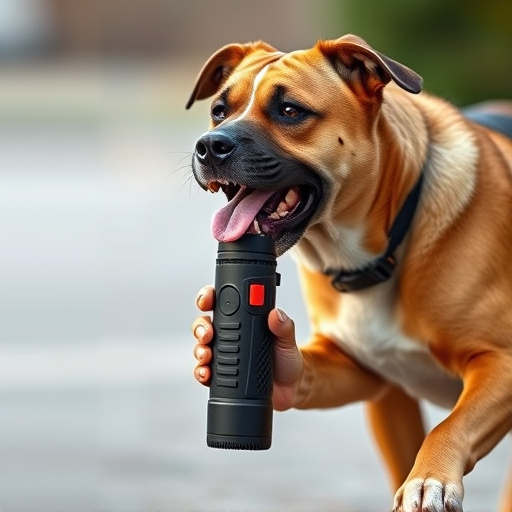Mace animal pepper spray, containing capsaicin from chili peppers, irritates dogs' sensory systems, causing disorientation. Accidental exposure may lead to eye irritation and damage; immediate rinsing with water or a mild solution is crucial for removal. Keep pepper spray away from pets and children to prevent accidental use. In case of contact, rinse warm water, follow with a mild cleanser, gently massage, and pat dry for dog comfort and to avoid further irritation.
“Uncover the power of mace formula animal pepper spray and its impact on canine safety. This potent weapon, designed to deter aggressive animals, can cause temporary blindness and discomfort in dogs. However, understanding its effects is just the first step. Learn how to navigate the aftermath, including effective removal techniques for removing pepper spray from a dog’s eyes, offering vital preventive measures, and exploring alternative solutions for ensuring canine well-being.”
- Understanding Mace Formula Animal Pepper Spray
- How Pepper Spray Affects Dog Eyes and Removal Techniques
- Preventive Measures and Alternatives to Pepper Spray for Dog Safety
Understanding Mace Formula Animal Pepper Spray
Mace formula animal pepper spray is a non-lethal self-defense tool designed to incapacitate and deter aggressive animals, primarily dogs. Understanding its composition is crucial when it comes to safe usage and effective application. The active ingredient in this type of spray is capsaicin, derived from chili peppers. This chemical irritates the animal’s eyes, nose, and respiratory system, causing temporary disorientation and pain. The formula also includes other components like water, surfactants, and flavoring agents that enhance its effectiveness and make it safe for human use while ensuring rapid breakdown upon exposure to the environment.
When a dog comes in contact with mace pepper spray, it can help in removing the spray from its eyes, which is a common concern among pet owners. The key is to rinse the eyes thoroughly with water or a mild solution, ensuring no residual spray remains. This prompt action can prevent irritation and potential damage to the dog’s sensitive eye tissue. It’s important to keep mace pepper spray out of reach of pets and children to avoid accidental exposure and ensure safety during its intended use.
How Pepper Spray Affects Dog Eyes and Removal Techniques
Pepper spray, a common self-defense tool, can have severe effects on dogs, especially when it comes to their sensitive eyes. When a dog’s eyes come into contact with pepper spray, it triggers a series of uncomfortable and potentially harmful reactions. The chemical irritants in the spray cause immediate irritation, leading to excessive tearing, watering, and redness. This reaction can temporarily impair the dog’s vision and cause significant discomfort, making it difficult for them to navigate their surroundings.
Removing pepper spray from a dog’s eyes is crucial to ensure their safety and comfort. To effectively get rid of the residue, start by rinsing the eyes thoroughly with warm water, holding the affected eyelid open if necessary. This initial rinse helps dilute and flush out the irritants. You can then use a mild, tear-free dog shampoo or a solution of warm water and baking soda to create a gentle cleanser. Gently massage the area around the eyes to help remove any remaining spray residue. After cleaning, rinse again with warm water and pat the eyes dry gently using a soft, clean cloth. Remember, prompt action is essential to minimize the impact of pepper spray on your dog’s eyes.
Preventive Measures and Alternatives to Pepper Spray for Dog Safety
Mace formula animal pepper spray, while a powerful tool for personal safety against aggressive dogs, can cause significant discomfort and potential harm if it comes into contact with a dog’s eyes. Understanding its effects and knowing how to safely remove the spray from their eyes is crucial. Regular training and alternative preventive measures, such as positive reinforcement, can help reduce the need for pepper spray. If used, proper removal techniques should be employed immediately to alleviate pain and avoid long-term damage. Remember, a well-trained dog is less likely to pose a threat, making these proactive steps essential for ensuring both your safety and that of the animal.
